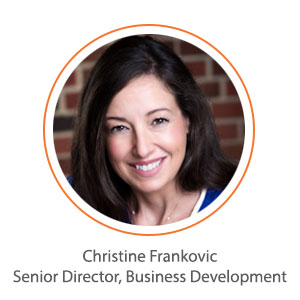 At KCAS, we work with Director, VP, and C-level pharmaceutical and biotech executives that need to measure their drug or the effect of their drug in biological matrix. Many of our customers rely on us to help design a strategic bioanalytical plan: a purposeful approach that flexes depending on regulatory and scientific requirements of the stage of drug development, as well as the available budget.
At KCAS, we work with Director, VP, and C-level pharmaceutical and biotech executives that need to measure their drug or the effect of their drug in biological matrix. Many of our customers rely on us to help design a strategic bioanalytical plan: a purposeful approach that flexes depending on regulatory and scientific requirements of the stage of drug development, as well as the available budget.
Below, I’ve outlined how KCAS approaches each drug development stage, and some of the nuances and specific needs relevant to each. If you make it to the end of this blog, my hope is that you have a better understanding of the available options and an insight into working with us.
Discovery: non-regulated, non-clinical. Used for evaluating a lead compound, dosing multiple molecules (cassette dosing), and evaluating in-vitro or in-vivo (often small rodents). KCAS offers three levels of robustness for our non-GLP or research grade (RG) assays. These can be tailored further, but we find that most of our customers feel that the pre-set parameters suit their needs:
- Level 1 (RG-1) Screening: Clients in this stage need the basics. Rapid, frequent, small batches for analysis. Goal is to see if the drug is detectable and get a decent idea of how much. In general, method development often is not necessary. Precision and accuracy (P-A) at 25%. Time is money; the assays are designed for quick analysis with data delivered in 3-5 business days after sample receipt.
- Level 2 (RG-2) Lead Optimization: May include limited method development, P-A at 20%. The “Goldilocks” of non-GLP. High value to cost ratio, a bit more evaluation around some key assay parameters.
- Level 3 (RG-3) Qualified: Most robust option for non-GLP methods, P-A at 15%. Ideal if you are fine-tuning formulations, have nominated a lead candidate that will move into pre-IND, or will rely on the data to make important decisions – whether they be scientific or financial.
All of these methods are suitable for measuring pharmacokinetic (PK) or toxicokinetic (TK) in plasma, tissues and other matrices, including API dose formulations.
Regulated Nonclinical: As you move into IND-enabling preclinical toxicology studies, the bioanalytical (BA) strategy turns more to ensuring the method complies with current GLP guidance and SEND data formatting. We are frequently asked to validate multiple animal species in succession: rodent (rat, mouse), non-rodent (dog, minipig, primate), but have also worked in other species, as the appropriate models vary based on drug class, disease, or route of administration. By using the experience from the Non-GLP Discovery assay, we incorporate efficiencies in method development as we have a good idea of what works and what doesn’t. We strategically design the appropriate long-term stability (LTS) duration of the analyte in matrix (e.g., plasma) as well as quantitation range (LLOQ/ULOQ) to maintain flexibility as doses change, taking into consideration any sample size limits (especially with small rodent species). We pay attention to these things, all the while ensuring the assay will pass acceptance criteria so timelines and regulatory compliance is met.
Clinical: Clinical bioanalytical support ranges from Phase I, II, III, NDA “check box” studies, and post-approval commitment. Clinical PK samples can be uniquely stressful on a bioanalytical assay. Humans are not the well-controlled animals of tox studies. Diet, exercise, age, concomitant meds, sample size (especially with small volume matrices, like CSF, or pediatric patient samples) all vary, depending on the type of study and therapeutic areas. The challenges mount as you move into Phase II/III studies and enroll patients with serious medical conditions. Many clinicians don’t think that a BA method can be affected by these conditions, but it can. In those final critical PK batches when you’re pressing us for QA’ed bioanalytical data transferred to the biostatistician and the database lock date is looming, you don’t want to deal with a failed BA batch and re-runs due to matrix effect. This is where the rubber meets the road in our world. The investment in a BA method that is robust enough to be challenged in multiple ways, without failing, is a worthy investment.
Clinical studies technically follow GCP, but bioanalytical methods by default are validated to current GLP guidance specifications. There are some instances where it doesn’t make sense to validate a clinical PK assay, and if you think you have a case, we can share our expertise in when and why this may hold true.
If you’re conducting a study across multiple clinical sites (domestic or international), KCAS can provide PK/PD collection kits, site staff training, and on-demand support to ensure the samples are collected, labeled, processed, and shipped appropriately. What a waste to spend the money, time and effort collecting the samples if the data is useless. Let’s avoid that frustrating situation. For a deeper dive on this topic, I’ve written previously.
Why KCAS?
As an independent lab, we simply have no other services to hide behind. Our people are our strength, and when you work with us, your strength too. Very few labs are solely focused on Bioanalytical or Biomarker services, like KCAS. We don’t do it all…we don’t have an in-life animal facility or clinic, or big team of CRAs. We aren’t the 800-pound gorilla CRO. Pound for pound, put us up against those gorillas, and you’ll see this little cheetah will outpace them all. We’d love the opportunity to show you how together, we provide reliable and defendable data, enabling our clients to improve health worldwide.

